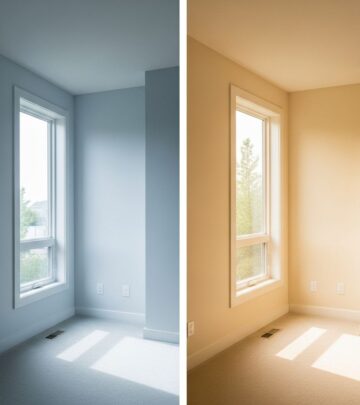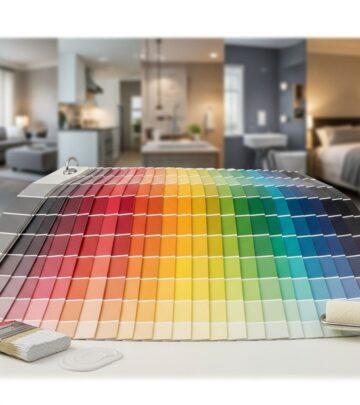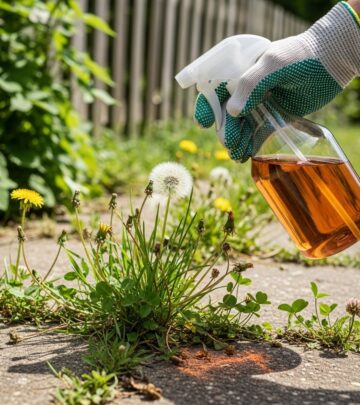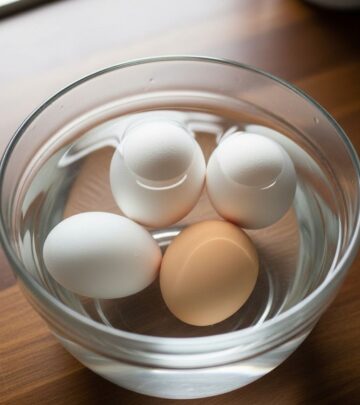How To Clean Windows: 4 Pro Steps For Streak-Free Panes
Discover professional window cleaning secrets for crystal-clear, streak-free results indoors and out.
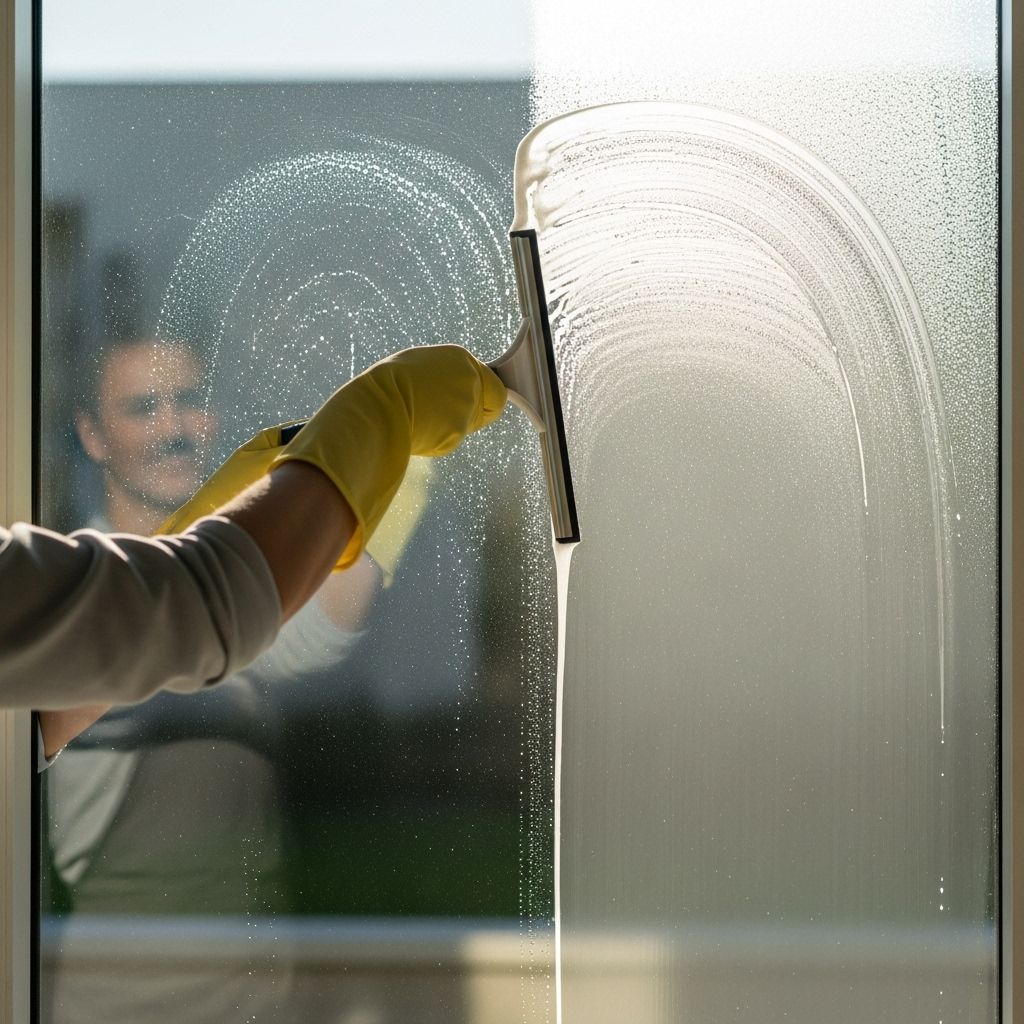
Image: HearthJunction Design Team
How to Wash Windows Like a Pro
Streaky, smudged, or grimy windows can undermine your home’s curb appeal and limit natural light indoors. While sparkling panes are often the hallmark of a well-maintained home, achieving that perfectly clear finish can be elusive—unless you know the secrets the pros use. This comprehensive guide will walk you through every step, from assembling the right tools and choosing the best cleaning solution to mastering expert techniques and keeping windows spotless all year round. Whether you’re a first-timer or looking to step up your routine, these insights will help you get professional-grade results with ease.
Essential Tools and Supplies for Window Washing
Before you start, assembling the proper equipment will make the job quicker and deliver better results. Professional window cleaners rely on a handful of tried-and-true tools:
- Squeegee: The most critical tool for streak-free results. Look for one with a sharp, soft rubber blade, ideally 10-14 inches wide for most residential panes.
- Strip Applicator: Also known as a window scrubber; its long, cloth-covered head holds solution and loosens dirt without scratching glass.
- Bucket: A wide, sturdy bucket large enough to accommodate your applicator and squeegee.
- Microfiber Cloths and Rags: Use these for wiping edges and drying sills. Microfiber is great for capturing lint and leaving glass streak-free.
- Chamois or Synthetic Sponge: Ideal for soaking up excess water on glass edges and corners.
- Cleaning Solution: Mild dishwashing liquid mixed with warm water works for most homes, but commercial window solutions are available for heavy grime.
- Extension Pole: For reaching high exterior panes safely.
- Optional: Razors for removing stuck-on debris (used with care), a ladder for high windows, and a pressure washer for large, especially dirty exteriors.
Recommended Cleaning Solution Recipe
- 2 gallons of warm water
- 1 teaspoon of mild dish soap (avoid anything with ammonia or strong chemicals, which can damage finishes)
Mix gently to avoid excess suds, which can leave residue on your glass.
Step-by-Step Window Washing Techniques
Professional window cleaning involves several efficient, well-ordered steps. Here’s how to tackle even the dirtiest panes inside and out.
1. Prepare the Area and Remove Dust
- Move furniture and window treatments away from work areas.
- Wipe down window frames, sashes, and sills with a dry cloth or a vacuum to remove dust and cobwebs.
- For extremely grimy exteriors, rinse with a hose first or use a soft-bristled brush.
2. Apply Cleaning Solution
- Saturate your strip applicator in the cleaning solution, squeezing out excess to avoid drips.
- Apply to the entire pane using overlapping strokes. Press lightly—no need to scour; the solution will loosen grime.
- Let it sit briefly to break down dirt, but don’t allow it to dry on the glass.
3. Master the Squeegee Technique
- Start at the top left corner of the window.
- Hold the squeegee at about a 45-degree angle to the glass. The blade should make contact edge-to-edge.
- Pull the squeegee smoothly across the glass in a reverse-S pattern for large windows, or straight downward strokes for smaller panes.
- At the end of each stroke, wipe the blade clean with a lint-free cloth to avoid streaks.
- Overlap each pass slightly to ensure total water removal.
4. Dry and Polish
- Use a damp, wrung-out chamois or microfiber cloth to absorb remaining water from the glass edges and corners.
- Dry the windowsill and frame with a clean rag.
- Buff out any remaining streaks or spots with a dry microfiber cloth, paying special attention to the edges.
Pro Tips for Streak-Free Results
- Timing is Key: Clean windows on a cloudy day or when the glass is cool. Direct sun can dry solution too quickly, leaving streaks.
- Maintain Your Tools: Replace squeegee blades often; a nicked or worn edge is a sure way to get streaks.
- Work Top to Bottom: Gravity draws dirty water down, so always start at the top and work downward.
- Change Water Frequently: Especially when tackling a big job or moving from outside to inside.
Deep Cleaning for Extremely Dirty or Hard-to-Reach Windows
For windows with caked-on dirt, mildew, or outside exposure to road salt and pollen, try these extra steps:
- Use a soft-bristled brush to loosen stubborn debris before washing.
- For exterior windows, consider a pressure washer set to its lowest setting, using a mixture of water and a small amount of dishwashing liquid. Keep the nozzle 3–5 feet from the glass and use a 30-degree angle for safety and effectiveness.
- Always thoroughly rinse cleaning solution to avoid residue and streaking.
- Let windows air dry or finish with a squeegee and microfiber mop for best results.
Caution: Never use razor blades or abrasive pads on tinted, coated, or insulated glass—these can scratch or damage the surface.
Regular Window Maintenance and Cleaning Schedule
Keeping windows clean year-round is much easier with a set routine:
| Frequency | Task |
|---|---|
| Weekly | Spot clean fingerprints, smudges, and pet marks inside with a microfiber cloth and mild cleaner. |
| Monthly | Wipe all frames and sills; clean interior glass where needed. |
| Spring & Fall | Thorough cleaning inside and out, including screens and storm windows. |
| As Needed | Deep clean exteriors or after storms, pollen season, or major renovations. |
Cleaning Screens and Window Tracks
- Remove screens and gently scrub with warm, soapy water using a soft brush.
- Rinse thoroughly and let dry before reinstalling.
- Use a vacuum crevice tool or narrow brush to clear dust and debris from window tracks.
- For gunked-up tracks, wipe with a damp cloth or use a solution of warm water and vinegar.
Frequently Asked Questions (FAQs)
What’s the best homemade window cleaning solution?
The simplest and most effective solution is warm water mixed with a few drops of mild dish liquid. For added shine, some homeowners add a cup of distilled white vinegar per gallon of water.
How do I avoid streaks on my windows?
Wipe the squeegee blade after each pass, work top to bottom, use a clean towel for finishing, and avoid cleaning windows in direct sunlight.
Can I use newspaper to dry my windows?
While old-fashioned, newspaper can be effective for buffing glass, but modern inks may smudge. Microfiber cloths or lint-free rags are safer and more reliable.
How do I clean high or hard-to-reach windows safely?
Use an extension pole for tools or wash from the inside if possible. For second-story exteriors, consider hiring a professional or using a pressure washer with care.
How often should I clean my windows?
Plan for a thorough cleaning at least twice a year (spring and fall). Spot cleaning and interior touch-ups can be scheduled as needed—weekly for busy family spaces, monthly for lightly trafficked areas.
Summary: Shine Like a Pro
Cleaning your windows doesn’t have to be a dreaded chore. With the right tools, a good cleaning solution, and pro techniques like the reverse-S squeegee method and overlapping passes, you can achieve streak-free windows that boost your home’s look and let in more light. Incorporate simple maintenance steps and seasonal deep-cleans to keep the view crystal clear year-round. Remember: a little effort, done right, goes a long way toward that satisfying, sparkling finish.
References
- https://www.youtube.com/watch?v=iApBJYyi67k
- https://www.thisoldhouse.com/windows/21016348/how-to-clean-windows-like-a-pro
- https://www.thisoldhouse.com/windows/91412/how-to-pressure-wash-windows
- https://community.windowcleaner.com/t/how-to-wash-windows-like-a-pro-this-old-house/35887
- https://www.thisoldhouse.com/windows/how-often-should-windows-be-cleaned
Read full bio of Anjali Sayee


